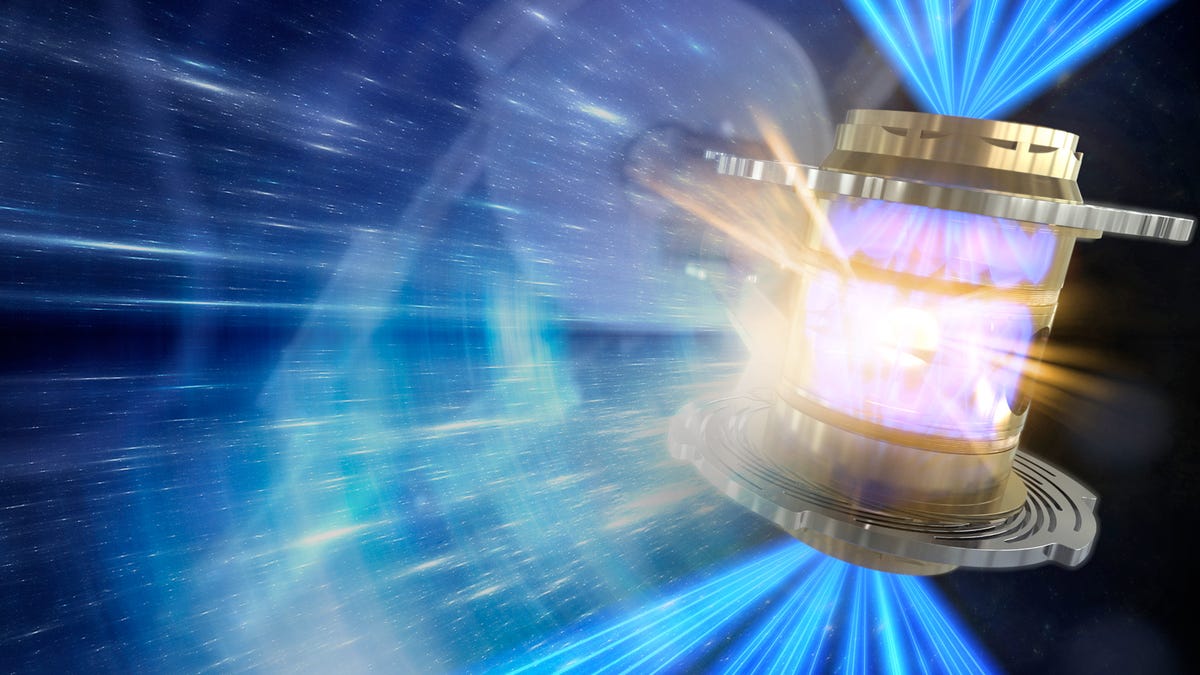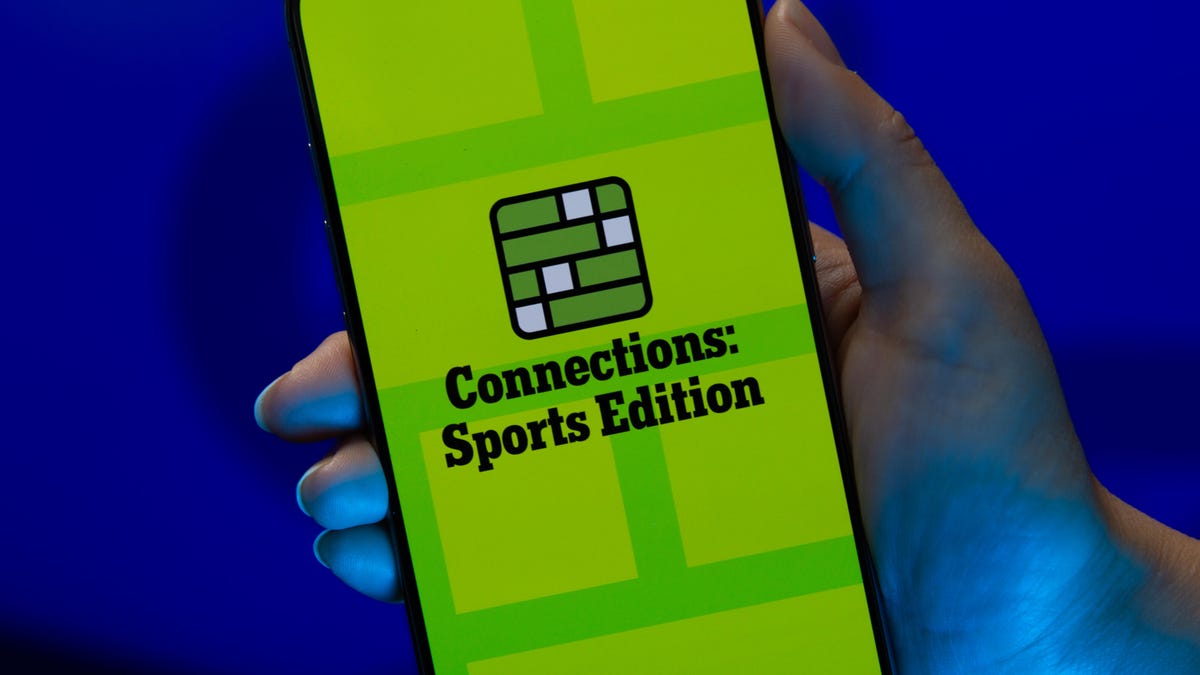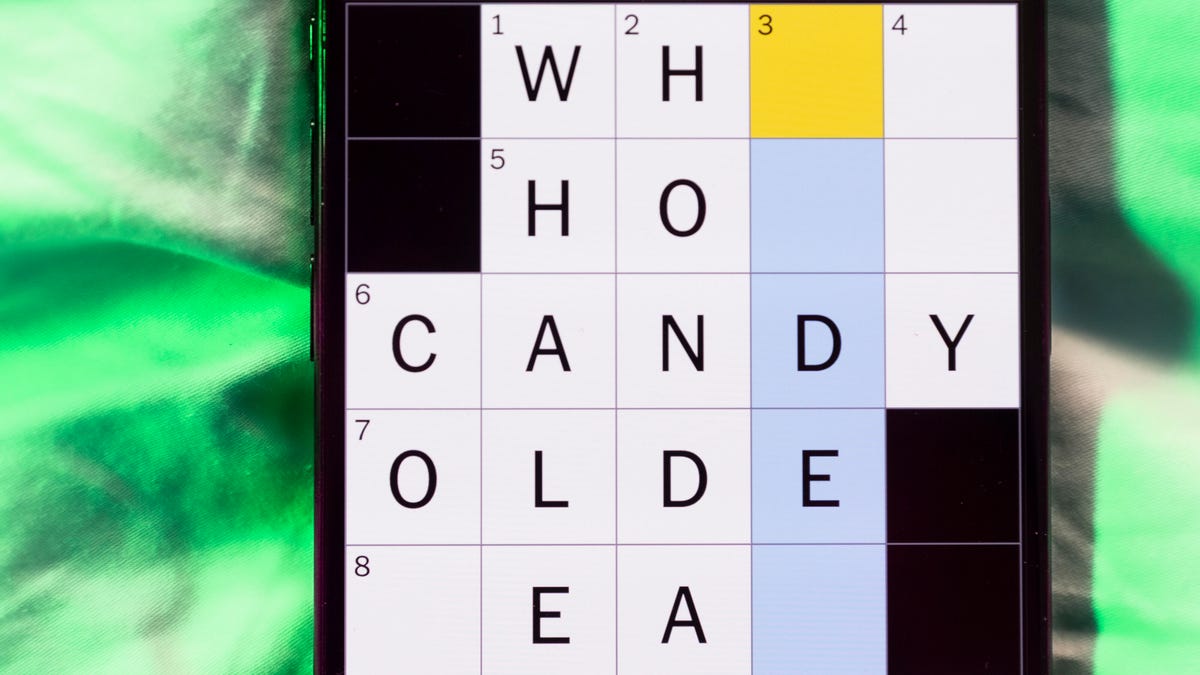Technologies
A Fusion Energy Breakthrough? Watch Live as US Scientists Make Major Announcement
A fusion reactor at Lawrence Livermore National Laboratory may have reached a critical milestone.

Scientists at Lawrence Livermore National Laboratory may have achieved a remarkable new high point for fusion reactions, generating even more energy than was pumped in during a recent experiment, according to a report by the Financial Times.
The publication suggests scientists «with knowledge of preliminary results from a recent experiment» have discussed the result and analysis is ongoing. A major announcement is scheduled to take place at LLNL on Tuesday, Dec. 13. It’s expected to be livestreamed by the Department of Energy at approximately 7 a.m. PT.
The National Ignition Facility operates an «inertial confinement fusion» experiment, which sees almost 200 lasers fired directly at a tiny capsule of hydrogen. According to Nathan Garland, a physicist at Griffith University in Australia, the lasers create a plasma around the capsule which eventually starts an implosion — these conditions allow for fusion reactions to take place.
Fusion is the reaction that powers our sun and it works by smashing two atoms together. This requires extreme pressure and extreme heat but trying to recreate the conditions in a lab is «super difficult,» noted Garland.
The energy released by fusing two atoms together is massive and, importantly, releases no carbon dioxide. Unlike fission — splitting atoms — used in nuclear power plants, fusion also leaves behind no radioactive waste and there’s no risk of meltdown, either. In short, if we could harness fusion power, it would revolutionize energy, allowing us to generate clean power without pumping greenhouse gases into the atmosphere.
If the FT report and chatter on social media is correct, scientists at LLNL could have achieved «fusion energy gain» which is denoted by the letter Q. In a fusion experiment, if Q > 1, then we’re on our way to a bona fide energy breakthrough, one that scientists have long been dreaming of reaching. «It is a big deal for sure, if true,» Garland said.
But, as with all science, it’s good to be cautious and not overhype results yet to be fully analyzed. We have been here before, after all. In 2013, reports swirled the NIF had achieved this exact feat. It wasn’t the case.
In more recent times, though, NIF has taken big strides toward achieving the goal. In August 2021, researchers reported they had, for a brief moment, re-created the power of the sun in a self-sustaining reaction. That’s a good pedigree and one that makes us here at CNET Science feel a little more confident in the rumors.
A spokesperson for LLNL told CNET «our analysis is still ongoing, so we’re unable to provide details or confirmation at this time» and provided a link to the media advisory — which, in all caps, suggests a «MAJOR SCIENTIFIC BREAKTHROUGH.»
The result won’t mean that we suddenly have an endless supply of energy. It’s likely the reaction that took place at NIF lasted for just a fraction of a second or even less. But this is the first step in a journey toward fusion energy as a viable, serious technology to power our world. It provides a proof of concept that fusion experiments like this can reach Q > 1.
So while I’m always cautious about throwing around the word «breakthrough» when reporting on cutting-edge science — especially in the realm of fusion energy — it does feel like it might be justified here. We’ll have to wait and see.
Updated Dec. 12: Changed sentence to «smashing two atoms together» rather than «heavy» atoms because hydrogen is, of course, a very light atom.
Technologies
Today’s NYT Connections: Sports Edition Hints and Answers for Nov. 29, #432
Here are hints and the answers for the NYT Connections: Sports Edition puzzle for Nov. 29, No. 432.

Looking for the most recent regular Connections answers? Click here for today’s Connections hints, as well as our daily answers and hints for The New York Times Mini Crossword, Wordle and Strands puzzles.
It’s Rivalry Saturday, so Connections: Sports Edition gives a big game a nod with two caregories. If you’re struggling with today’s puzzle but still want to solve it, read on for hints and the answers.
Connections: Sports Edition is published by The Athletic, the subscription-based sports journalism site owned by The Times. It doesn’t appear in the NYT Games app, but it does in The Athletic’s own app. Or you can play it for free online.
Read more: NYT Connections: Sports Edition Puzzle Comes Out of Beta
Hints for today’s Connections: Sports Edition groups
Here are four hints for the groupings in today’s Connections: Sports Edition puzzle, ranked from the easiest yellow group to the tough (and sometimes bizarre) purple group.
Yellow group hint: Fire it on in there.
Green group hint: Buckeyes.
Blue group hint: Wolverines.
Purple group hint: Not double.
Answers for today’s Connections: Sports Edition groups
Yellow group: Baseball pitching feats.
Green group: Associated with Ohio State.
Blue group: Associated with Michigan.
Purple group: Triple ____.
Read more: Wordle Cheat Sheet: Here Are the Most Popular Letters Used in English Words
What are today’s Connections: Sports Edition answers?
The yellow words in today’s Connections
The theme is baseball pitching feats. The four answers are immaculate inning, no-hitter, perfect game and shutout.
The green words in today’s Connections
The theme is associated with Ohio State. The four answers are dotting the I, gray, scarlet and The Horseshoe.
The blue words in today’s Connections
The theme is associated with Michigan. The four answers are blue, Hail to the Victors, maize and The Big House.
The purple words in today’s Connections
The theme is triple ____. The four answers are A, crown, double and play.
Technologies
Today’s NYT Mini Crossword Answers for Saturday, Nov. 29
Here are the answers for The New York Times Mini Crossword for Nov. 29.

Looking for the most recent Mini Crossword answer? Click here for today’s Mini Crossword hints, as well as our daily answers and hints for The New York Times Wordle, Strands, Connections and Connections: Sports Edition puzzles.
Need some help with today’s Mini Crossword? It’s Saturday, so it’s a long one. Read on for all the answers. And if you could use some hints and guidance for daily solving, check out our Mini Crossword tips.
If you’re looking for today’s Wordle, Connections, Connections: Sports Edition and Strands answers, you can visit CNET’s NYT puzzle hints page.
Read more: Tips and Tricks for Solving The New York Times Mini Crossword
Let’s get to those Mini Crossword clues and answers.
Mini across clues and answers
1A clue: Hockey disks
Answer: PUCKS
6A clue: Signature headwear for Mr. Monopoly
Answer: TOPHAT
7A clue: Seedy establishment?
Answer: NURSERY
8A clue: Bioweapon at the center of a 2001 envelope scare
Answer: ANTHRAX
9A clue: Cleverly skillful
Answer: ADROIT
10A clue: Sleeping enclosure for a pet dog
Answer: CRATE
11A clue: Picks up the tab
Answer: PAYS
Mini down clues and answers
1D clue: Play, as a film character
Answer: PORTRAY
2D clue: Ultimate consequences
Answer: UPSHOTS
3D clue: Sweetheart, in French
Answer: CHERIE
4D clue: 24-___ gold
Answer: KARAT
5D clue: River in which Achilles was dipped (except for his heel!)
Answer: STYX
6D clue: Frozen landscape
Answer: TUNDRA
7D clue: Civil rights org. co-founded by W.E.B. Du Bois
Answer: NAACP
Don’t miss any of our unbiased tech content and lab-based reviews. Add CNET as a preferred Google source.
Technologies
Repair Your Electronics at Home With This Rare Black Friday Discount on the iFixit Pro Tech Go Toolkit
This toolkit rarely goes on sale, so take advantage of this opportunity to snag it for only $40.

While Black Friday is an excellent time to replace old smartphones or broken laptops at a discount, not everyone is looking to splurge on new tech right now. If you’re shopping on a budget, or simply like the devices that you have and aren’t ready for an upgrade, investing in an electronics repair kit may be a wise option. We’ve spotted a discount on the iFixit Pro Tech Go tech toolkit, bringing its price down to just $40. But don’t delay, Black Friday is in its final hours and this kit rarely goes on sale.
The iFixit Pro Tech Go kit can be used to open up and repair a wide range of electronics, including smartphones, laptops, gaming consoles, and smart home devices for DIY repairs like battery or screen replacements. The kit has a 32-bit Moray driver kit, an opening tool, a suction handle, a jimmy, a spudger and angled tweezer to carefully open your devices.
Don’t miss any of our unbiased tech content and lab-based reviews. Add CNET as a preferred Google source.
Repairing your own tech can save you hundreds or even thousands of dollars. It also reduces e-waste by helping your devices last longer rather than throwing them away over minor issue. As of this year, all 50 states have introduced right-to-repair legislation designed to give people a legal right to fix their own tech, and several states have already signed it into law.
You can check out more deals from iFixIt now on Amazon. Plus, for other budget buys, check out our roundup of the best Black Friday deals under $100.
MOBILE DEALS OF THE WEEK
-
$749 (save $250)
-
$475 (save $175)
-
$499 (save $300)
-
$900 (save $400)
Why this deal matters
This is a record low price on a repair kit that rarely goes on sale. While we did see a modest discount on the iFixit Pro Tech Go toolkit during Amazon Prime Day in July, it was not marked down for October Prime Day or other sales such as Memorial Day or Labor Day. As such, it’s fairly unlikely that we’ll see it go on sale again this season, so this might be your last chance to get the toolkit for only $40.
Join Our Daily Deals Text Group!
Get hand-picked deals from CNET shopping experts straight to your phone.
By signing up, you confirm you are 16+ and agree to receive recurring marketing messages at the phone number provided. Consent is not a condition of purchase. Reply STOP to unsubscribe. Msg & data rates may apply. View our Privacy Policy and Terms of Use.
-

 Technologies3 года ago
Technologies3 года agoTech Companies Need to Be Held Accountable for Security, Experts Say
-

 Technologies3 года ago
Technologies3 года agoBest Handheld Game Console in 2023
-

 Technologies3 года ago
Technologies3 года agoTighten Up Your VR Game With the Best Head Straps for Quest 2
-

 Technologies4 года ago
Technologies4 года agoBlack Friday 2021: The best deals on TVs, headphones, kitchenware, and more
-

 Technologies4 года ago
Technologies4 года agoVerum, Wickr and Threema: next generation secured messengers
-

 Technologies4 года ago
Technologies4 года agoGoogle to require vaccinations as Silicon Valley rethinks return-to-office policies
-

 Technologies4 года ago
Technologies4 года agoOlivia Harlan Dekker for Verum Messenger
-

 Technologies4 года ago
Technologies4 года agoiPhone 13 event: How to watch Apple’s big announcement tomorrow
